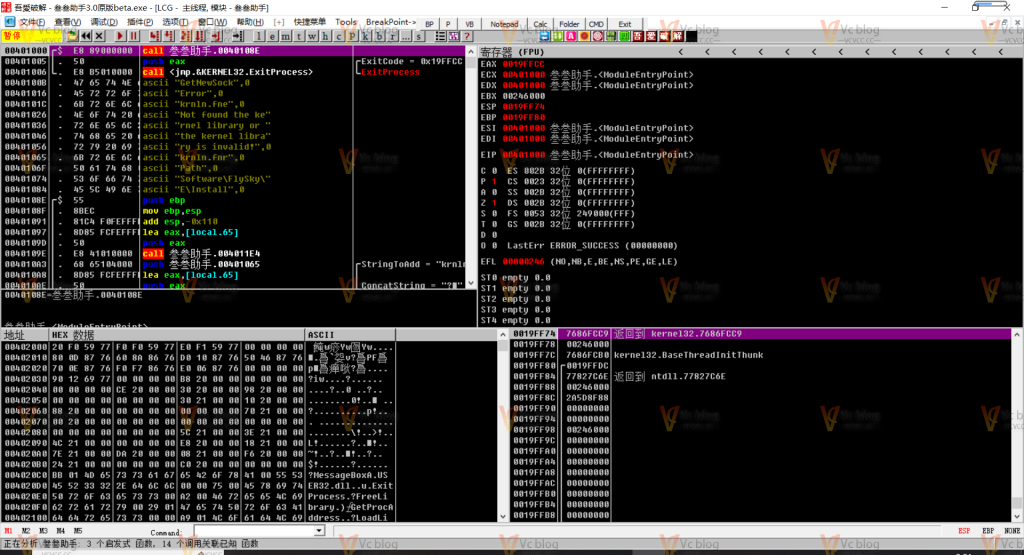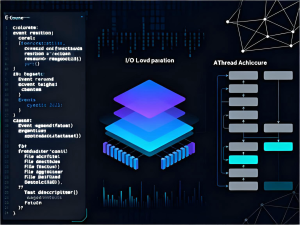【摘要】
指针是C语言的灵魂,也是无数开发者的噩梦。本文汇集了数十年工程实践中的经典陷阱案例,从内存泄漏、悬空指针到缓冲区溢出,深度剖析每个陷阱背后的原理,并提供经过验证的解决方案。无论你是初学者还是资深工程师,这些用实际项目教训换来的经验都将帮助你写出更安全、更稳定的C语言代码。
![图片[1]-C语言指针的七大禁忌:资深工程师的血泪教训与救赎-Vc博客](https://blogimg.vcvcc.cc/2025/10/b064b9d25cae48cf915f24b9d476bd89preview.jpegtplv-a9rns2rl98-downsize_watermark_1_61.jpg?imageView2/0/format/webp/q/75)
一、指针初始化陷阱:从随机值到确定性安全
1. 未初始化指针的致命风险
#include <stdio.h>
#include <stdlib.h>
void uninitialized_pointer_demo() {
int *ptr; // 危险:未初始化的指针
// 以下行为是未定义的,可能导致程序崩溃
// *ptr = 100;
printf("未初始化指针的值: %p\n", (void*)ptr);
// 正确的初始化方式
int *safe_ptr = NULL; // 初始化为NULL
int value = 42;
int *value_ptr = &value; // 指向有效变量
// 使用前的安全检查
if(safe_ptr != NULL) {
*safe_ptr = 100;
}
}2. 指针初始化的最佳实践
#include <stdlib.h>
// 防御性编程:指针初始化宏
#define INIT_POINTER(ptr) (ptr) = NULL
// 安全分配宏
#define SAFE_ALLOC(ptr, type, count) \
do { \
INIT_POINTER(ptr); \
(ptr) = (type*)malloc((count) * sizeof(type)); \
if ((ptr) == NULL) { \
perror("内存分配失败"); \
exit(EXIT_FAILURE); \
} \
} while(0)
void safe_initialization_example() {
int *dynamic_ptr;
INIT_POINTER(dynamic_ptr);
SAFE_ALLOC(dynamic_ptr, int, 10);
// 使用指针
for(int i = 0; i < 10; i++) {
dynamic_ptr[i] = i * i;
}
free(dynamic_ptr);
dynamic_ptr = NULL; // 释放后立即置空
}二、内存泄漏迷宫:识别、预防与根除
1. 常见内存泄漏场景分析
#include <stdlib.h>
#include <string.h>
// 场景1:忘记释放内存
void memory_leak_scenario1() {
char *buffer = (char*)malloc(1024);
strcpy(buffer, "这段内存永远不会被释放");
// 缺少 free(buffer);
}
// 场景2:异常路径下的泄漏
int risky_operation(int should_fail) {
char *resource1 = malloc(100);
char *resource2 = malloc(200);
if(should_fail) {
return -1; // 资源泄漏!
}
// 正常情况下的释放
free(resource1);
free(resource2);
return 0;
}2. 资源自动管理技术
#include <stdlib.h>
// RAII风格资源管理
typedef struct {
void *resource;
void (*cleanup_func)(void*);
} auto_cleanup_t;
void cleanup_wrapper(auto_cleanup_t *cleanup) {
if(cleanup->resource && cleanup->cleanup_func) {
cleanup->cleanup_func(cleanup->resource);
}
}
#define AUTO_CLEANUP __attribute__((cleanup(cleanup_wrapper)))
void automatic_cleanup_demo() {
AUTO_CLEANUP auto_cleanup_t cleaner = {
.resource = malloc(100),
.cleanup_func = free
};
if(cleaner.resource == NULL) {
return; // 自动调用free
}
// 使用资源
// 函数返回时自动释放
}三、悬空指针陷阱:已释放内存的幽灵访问
1. 悬空指针的成因与危害
#include <stdlib.h>
void dangling_pointer_example() {
int *ptr1 = malloc(sizeof(int));
*ptr1 = 100;
free(ptr1); // 释放内存
// ptr1现在成为悬空指针
// *ptr1 = 200; // 危险:访问已释放内存
// 正确的做法:释放后立即置空
ptr1 = NULL;
// 双重释放问题
int *ptr2 = malloc(sizeof(int));
free(ptr2);
// free(ptr2); // 危险:双重释放
ptr2 = NULL; // 防止双重释放
}2. 智能指针模拟方案
#include <stdlib.h>
#include <stdbool.h>
typedef struct {
void *ptr;
size_t ref_count;
} smart_pointer_t;
smart_pointer_t* smart_malloc(size_t size) {
smart_pointer_t *sp = malloc(sizeof(smart_pointer_t));
if(!sp) return NULL;
sp->ptr = malloc(size);
if(!sp->ptr) {
free(sp);
return NULL;
}
sp->ref_count = 1;
return sp;
}
void smart_free(smart_pointer_t *sp) {
if(!sp) return;
sp->ref_count--;
if(sp->ref_count == 0) {
free(sp->ptr);
free(sp);
}
}四、缓冲区溢出深渊:数组与指针的边界战争
1. 常见溢出漏洞分析
#include <stdio.h>
#include <string.h>
void buffer_overflow_demo() {
char small_buffer[10];
// 危险的字符串操作
// strcpy(small_buffer, "这个字符串太长了"); // 缓冲区溢出!
// 安全的替代方案
strncpy(small_buffer, "安全的字符串", sizeof(small_buffer)-1);
small_buffer[sizeof(small_buffer)-1] = '#include <stdio.h>
#include <string.h>
void buffer_overflow_demo() {
char small_buffer[10];
// 危险的字符串操作
// strcpy(small_buffer, "这个字符串太长了"); // 缓冲区溢出!
// 安全的替代方案
strncpy(small_buffer, "安全的字符串", sizeof(small_buffer)-1);
small_buffer[sizeof(small_buffer)-1] = '\0';
// 更安全的函数
snprintf(small_buffer, sizeof(small_buffer), "%s", "安全的字符串");
}
void off_by_one_error() {
int array[5];
// 错误的循环边界
for(int i = 0; i <= 5; i++) { // 应该是 i < 5
array[i] = i; // 当i=5时越界
}
}
';
// 更安全的函数
snprintf(small_buffer, sizeof(small_buffer), "%s", "安全的字符串");
}
void off_by_one_error() {
int array[5];
// 错误的循环边界
for(int i = 0; i <= 5; i++) { // 应该是 i < 5
array[i] = i; // 当i=5时越界
}
}2. 边界检查强化技术
#include <stdbool.h>
#include <string.h>
// 安全的数组访问封装
typedef struct {
int *data;
size_t size;
} safe_array_t;
bool safe_array_set(safe_array_t *arr, size_t index, int value) {
if(index < arr->size) {
arr->data[index] = value;
return true;
}
return false;
}
bool safe_array_get(safe_array_t *arr, size_t index, int *value) {
if(index < arr->size && value) {
*value = arr->data[index];
return true;
}
return false;
}五、类型转换陷阱:强制转换的隐藏成本
1. 危险的强制类型转换
#include <stdint.h>
void dangerous_casts() {
// 1. 整数到指针的转换
int address = 0x1000;
// int *ptr = (int*)address; // 危险:可能访问非法地址
// 2. 指针类型不匹配
char *char_ptr = "hello";
// int *int_ptr = (int*)char_ptr; // 违反严格别名规则
// 3. 函数指针转换
void (*func_ptr)() = NULL;
// int (*wrong_ptr)(int) = (int(*)(int))func_ptr; // 危险的转换
}2. 安全的类型转换模式
#include <stdint.h>
#include <assert.h>
// 安全的整数到指针转换
void* int_to_ptr_safely(uintptr_t address) {
// 添加地址有效性检查
if(address == 0 || address > 0xFFFFFFFF) {
return NULL;
}
return (void*)address;
}
// 使用联合进行类型双关
typedef union {
uint32_t as_uint32;
float as_float;
uint8_t as_bytes[4];
} type_pun_t;
float uint32_to_float(uint32_t value) {
type_pun_t converter;
converter.as_uint32 = value;
return converter.as_float;
}六、多级指针迷宫:指向指针的指针
1. 多级指针的正确用法
#include <stdlib.h>
#include <stdio.h>
void allocate_2d_array(int ***array, int rows, int cols) {
*array = malloc(rows * sizeof(int*));
if(!*array) return;
for(int i = 0; i < rows; i++) {
(*array)[i] = calloc(cols, sizeof(int));
if(!(*array)[i]) {
// 清理已分配的内存
for(int j = 0; j < i; j++) {
free((*array)[j]);
}
free(*array);
*array = NULL;
return;
}
}
}
void free_2d_array(int ***array, int rows) {
if(!array || !*array) return;
for(int i = 0; i < rows; i++) {
free((*array)[i]);
}
free(*array);
*array = NULL;
}2. 函数指针与回调陷阱
#include <stdlib.h>
// 错误的函数指针使用
typedef int (*compare_func)(void*, void*);
void dangerous_callback(compare_func cmp) {
int a = 10, b = 20;
// 调用前缺少参数类型检查
// cmp(&a, &b); // 可能崩溃
}
// 安全的回调机制
typedef int (*safe_compare_func)(const void*, const void*, size_t size);
struct safe_comparator {
safe_compare_func compare;
size_t element_size;
};
int safe_compare_call(struct safe_comparator *comp,
const void *a, const void *b) {
if(!comp || !comp->compare) return 0;
return comp->compare(a, b, comp->element_size);
}七、现代调试技术与验证工具
1. 静态分析集成
#include <stdlib.h>
// 使用静态分析器友好的代码模式
void static_analysis_friendly() {
// 明确的资源所有权
int *resource __attribute__((ownership_holds(malloc))) = malloc(100);
if(!resource) return;
// 使用资源
// ...
free(resource);
}
// 函数属性注解
void __attribute__((nonnull(1))) safe_function(char *must_not_be_null) {
// 编译器会检查参数不为NULL
}2. 运行时检查框架
#include <stdio.h>
#include <stdlib.h>
#include <assert.h>
#ifdef DEBUG
#define POINTER_CHECK(ptr) \
do { \
if((ptr) == NULL) { \
fprintf(stderr, "空指针错误: %s:%d\n", __FILE__, __LINE__); \
abort(); \
} \
} while(0)
#define BOUNDS_CHECK(ptr, index, size) \
do { \
if((index) >= (size)) { \
fprintf(stderr, "越界访问: %s:%d\n", __FILE__, __LINE__); \
abort(); \
} \
} while(0)
#else
#define POINTER_CHECK(ptr) (void)0
#define BOUNDS_CHECK(ptr, index, size) (void)0
#endif
void checked_pointer_operations() {
int *array = malloc(10 * sizeof(int));
POINTER_CHECK(array);
for(int i = 0; i < 10; i++) {
BOUNDS_CHECK(array, i, 10);
array[i] = i;
}
free(array);
}【总结】
指针陷阱是C语言编程中最为常见也最为危险的错误来源。通过理解每个陷阱背后的原理,采用防御性编程策略,结合现代工具链的检测能力,开发者可以显著提升代码的可靠性和安全性。记住,优秀的C语言工程师不是不犯错误,而是建立了完善的错误预防和检测机制。将这些经验融入日常开发实践,将使你的代码更加健壮和可维护。
© 版权声明
THE END















暂无评论内容